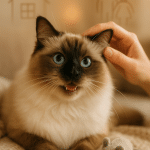Introduction to Exotic Cat Breeds for Families
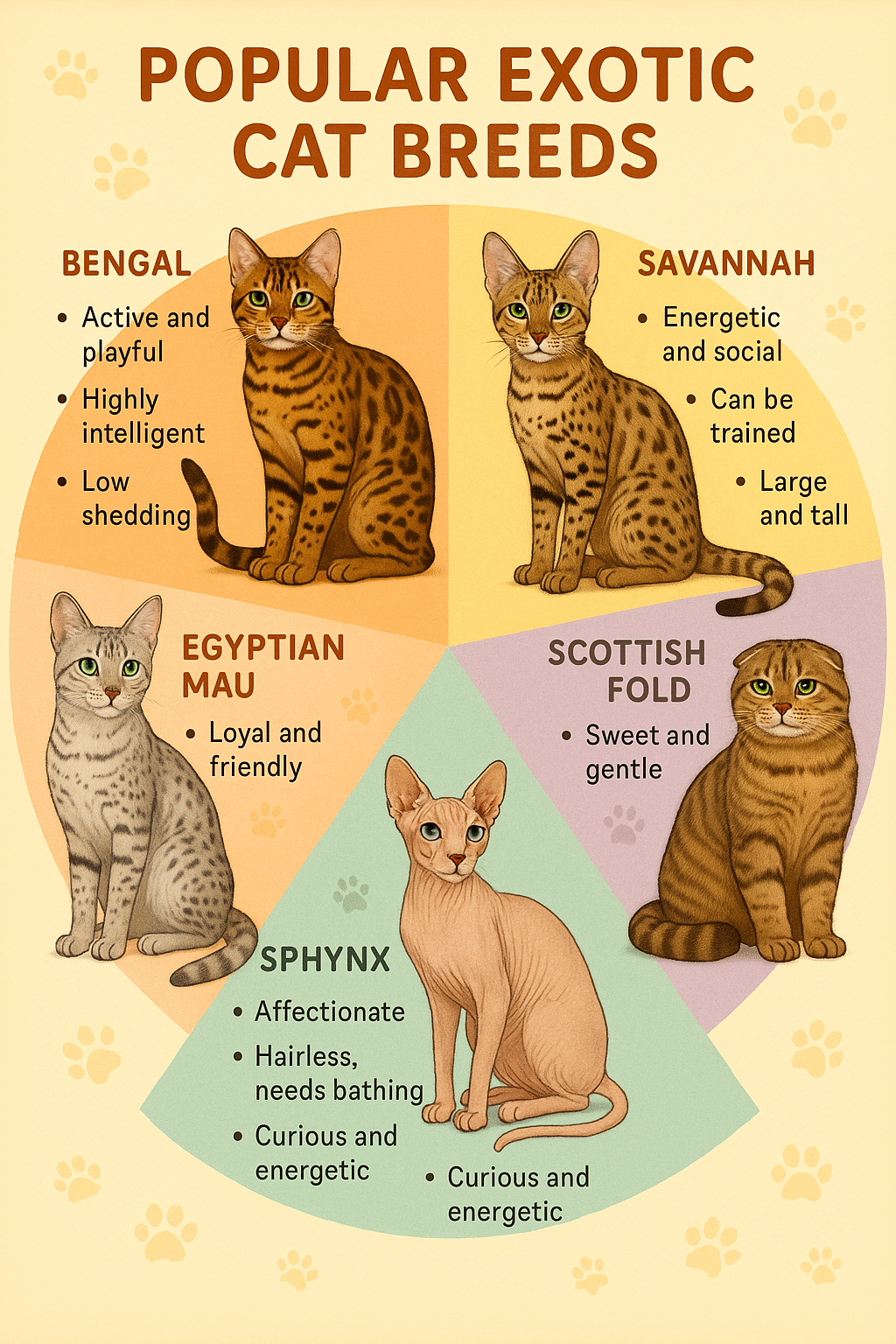
If you’re a pet owner or part of a family looking to add an extraordinary feline friend into your home, you’re in the right place. Exotic cat breeds captivate with their wild looks, unique personalities, and often, striking intelligence. But choosing the right exotic cat breed for your family means understanding not only their physical traits but their behavioral needs and how they fit into everyday life. In this extensive guide, I’ll take you through five stunning exotic cat breeds perfect for families and training, blending expert insights and practical care advice. Whether you’re curious about hypoallergenic exotic cat breeds, large exotic cat breeds for homes, or cats that are friendly for households with children, this article has something for everyone—from first-time pet owners to seasoned enthusiasts.
By the end, you’ll have a clear understanding of what defines an exotic cat breed, their ancestry, care requirements, and training tips to foster a lifelong, loving relationship. So, let’s dive right into the fascinating world of exotic cat breeds.
What Defines an Exotic Cat Breed?
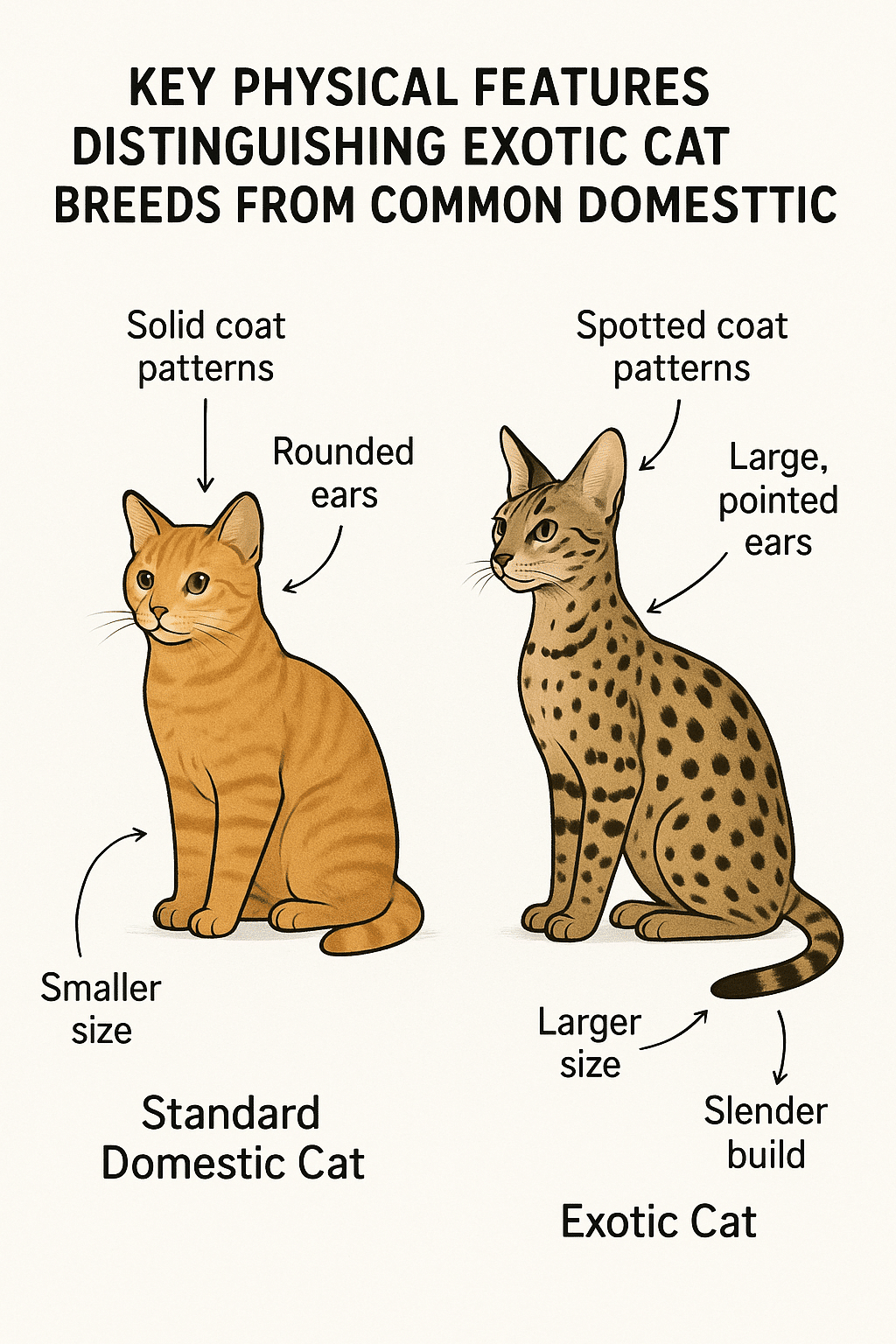
The term “exotic cat breed” refers to domestic cats that have distinctively unusual appearances or come from hybridized lineages involving wild cats. These breeds often show traits such as spotted or marbled coats that resemble wild felines, longer limbs, larger ears, or unique coat textures. Unlike typical domestic shorthairs or longhairs, exotic cat breeds may carry genes from wild cat ancestors like the Asian leopard cat, serval, or jungle cat.
That wild heritage doesn’t mean these cats are untamable or aggressive, exactly the opposite. They’re bred to combine the appealing exotic look with domestic cat temperaments suitable for family life. Many exotic cats require specialized care and training routines to thrive, but they also provide immense joy with their playful, affectionate, and sometimes mischievous personalities.
Why Choose an Exotic Cat Breed for Your Family?
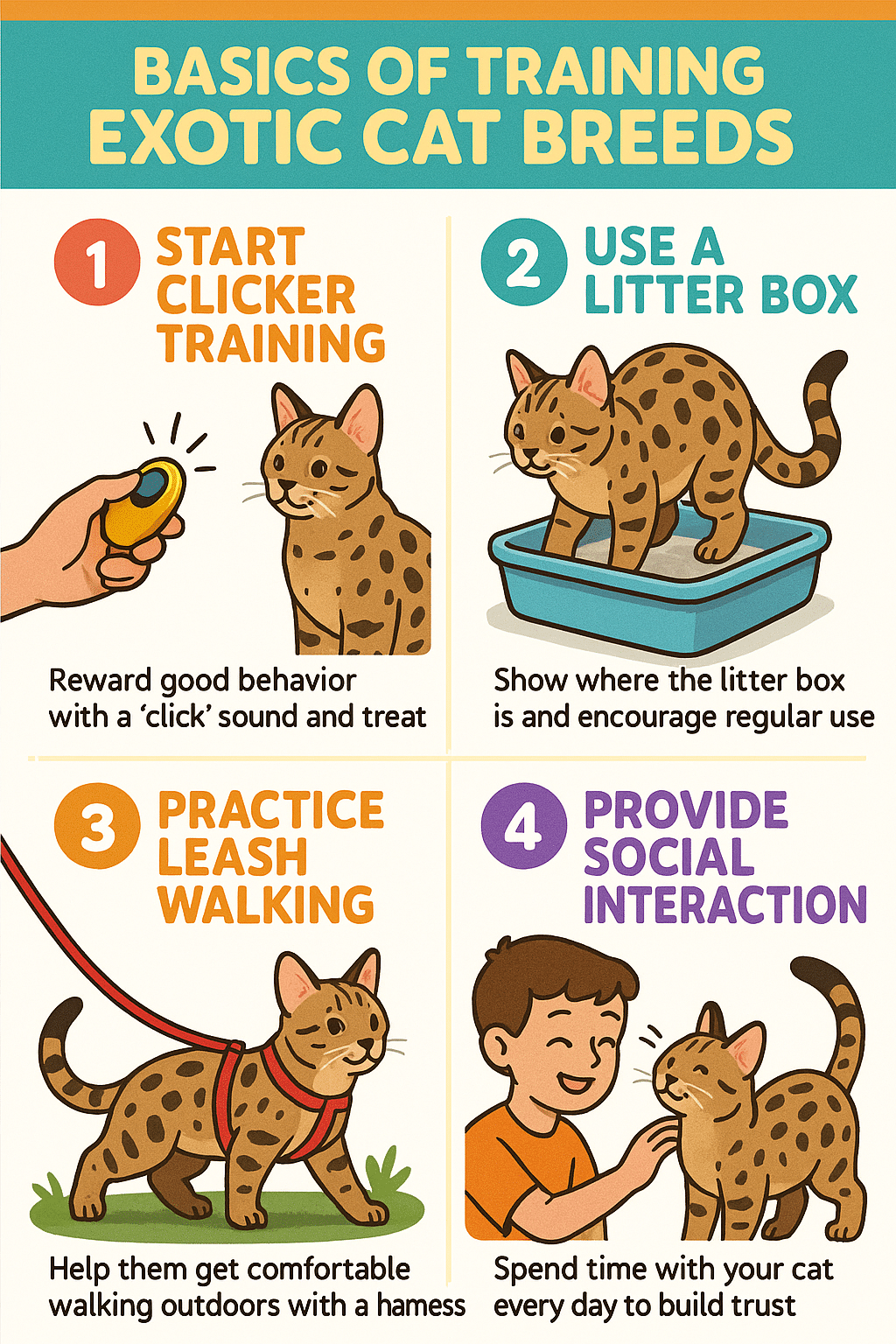
Opting for exotic cat breeds can add variety and excitement to your home environment. These cats often stand out in terms of appearance and behavior, offering a dynamic pet experience. For families, exotic cats can be an excellent choice because many are intelligent and social, making them trainable and good companions for children.
Importantly, exotic cat breeds come in various sizes and coat types, including hypoallergenic options, which means families with mild allergies can still enjoy the charm of an exotic feline without constant irritation. Plus, these cats can be incredibly affectionate and loyal. If you’re seeking a cat that’s as stunning as it is engaging—a real showstopper in personality and looks—exotic cat breeds might just be your ideal pick.
Understanding Wild Cat Ancestry and Hybrid Origins
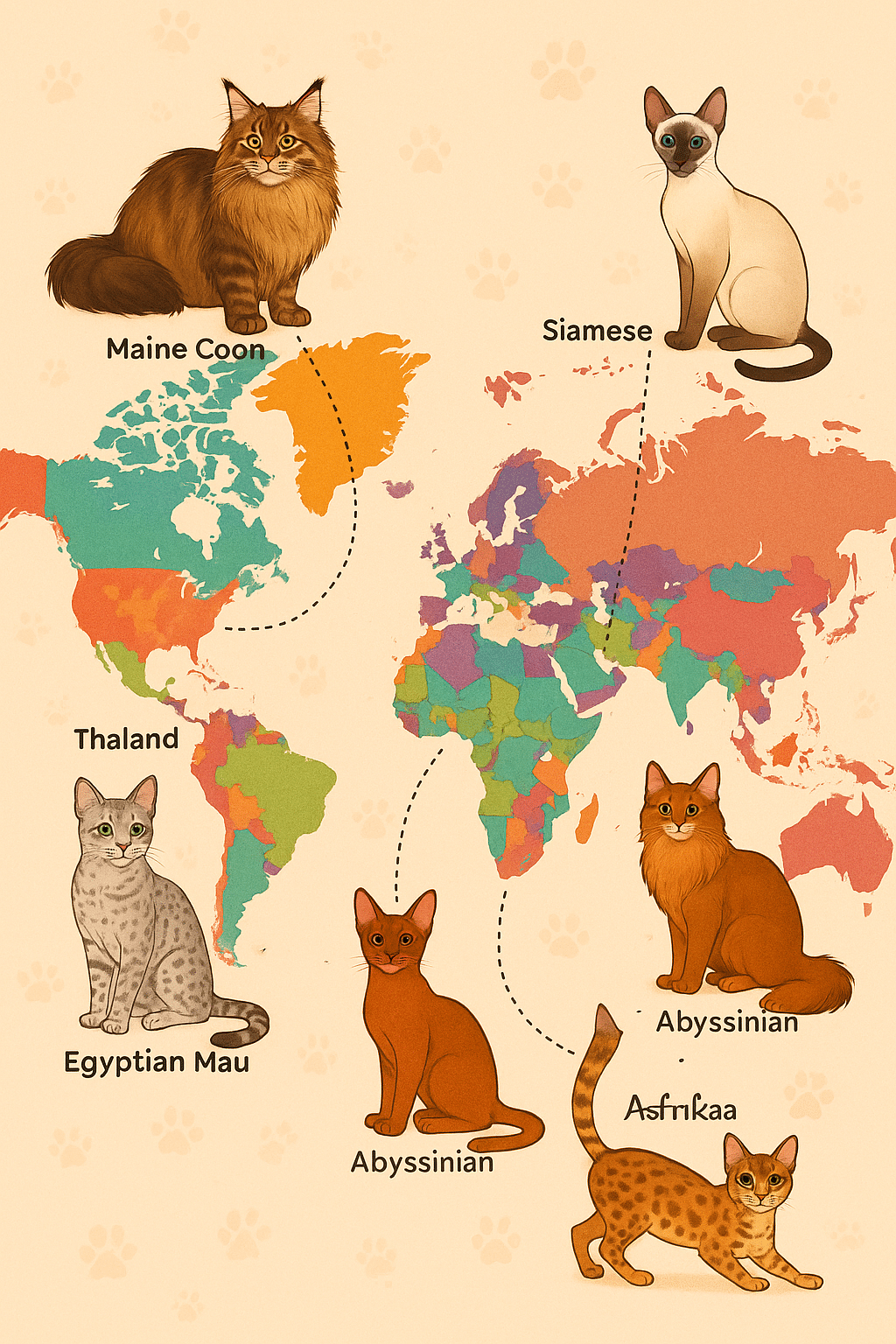
Many exotic cat breeds arise from hybridization between domestic cats and wild species, such as the Bengal, which traces back to the Asian leopard cat, or the Savannah, descending from the serval. This ancestry influences not just their striking appearance but also their behavioral traits, energy levels, and care needs.
This wild lineage adds layers of complexity: these cats often require more physical exercise, mental stimulation, and sometimes more delicate health monitoring compared to typical domestic cats. However, breeders have selectively paired these wild genes with domestic genetics to ensure socialization and temperament that suit home environments.
Understanding these genetic backgrounds helps set realistic expectations and ensures families provide the best possible care tailored to these unique breeds.
Breed Profile 1: Bengal – The Energetic Leopard-Like Companion
Origins and Physical Traits
Bengal cats are one of the most popular exotic cat breeds with wild appearance. Originating from crosses between domestic cats and Asian leopard cats, Bengals display mesmerizing rosetted and spotted coats reminiscent of miniature leopards. Their medium to large build, sleek muscular bodies, and glittering fur make them an instant eye-catcher.
Adult Bengals typically weigh between 8 to 15 pounds and feature a short, dense coat that’s incredibly soft yet resilient. Their coloration varies from brown spotted to snow (white with dark markings) and marbled patterns. Bengals exhibit intense green or gold eyes that add to their wild allure.
Temperament and Social Behavior
Bengals are renowned for their high energy, curiosity, and intelligence. They thrive in interactive households where playtime and engagement are plentiful. These cats are extremely social and bond closely with family members, often following their humans from room to room.
What’s fascinating is their dog-like behavior; Bengals are known to fetch toys, learn commands, and even walk on harnesses. They make excellent playmates for older children who can handle an active pet.
Training Tips and Family Compatibility
Training a Bengal isn’t just possible—it’s rewarding. Positive reinforcement, such as using treats or play cues, encourages them to learn tricks or respect boundaries. Because of their high energy, setting up daily play sessions with wand toys, laser pointers, or puzzle feeders helps manage their activity levels and keeps boredom at bay.
Families with older kids or active lifestyles will find the Bengal a perfect match. However, it’s important to note they require mental challenges and physical activity to avoid destructive behaviors.
Care and Grooming Needs
Bengals have relatively low grooming needs due to their short coat. Weekly brushing is sufficient to remove dead hairs and maintain coat shine. Besides grooming, they require a balanced diet rich in protein and moisture to support their muscular build and energy demands.
Due to their agile nature, providing climbing structures and safe outdoor enclosures or supervised outdoor walks is beneficial.
Breed Profile 2: Savannah – The Tall, Curious Hybrid
Unique Ancestry and Appearance
Savannah cats are one of the largest exotic cat breeds for homes, boasting a striking serval lineage. These tall, slender felines can reach up to 20 pounds or more, with spots, large ears, and long legs that give them an awe-inspiring wild look.
Early-generation Savannahs (F1 and F2) have more wild ancestry, often making physical traits and behaviors more pronounced, while later generations tend to be more domesticated. Their coat patterns consist mainly of black spots on gold, silver, or smoke backgrounds.
Exercise and Enrichment for Active Households
Savannahs require ample exercise and enrichment to channel their incredible athleticism. They’re famous for their jumping ability—some have been recorded leaping six feet vertically! Families should prepare to provide climbing trees, interactive play tools, and spacious environments.
Because of their active nature, they do well in homes where stimulation and engagement are daily priorities. Without enough attention, these cats may become bored or anxious.
Behavior with Children and Other Pets
When properly socialized, Savannah cats can be affectionate and gentle with children. However, due to their size and energy, caution is recommended with very young kids to prevent accidental injuries. These cats often coexist well with other pets, especially dogs, displaying friendly, playful interactions.
Patience, early socialization, and gradual introductions make them excellent companions even for multi-pet households.
Special Considerations in Ownership and Cost
Owning a Savannah cat brings responsibilities including higher acquisition costs—the price reflects their rarity and breeding challenges. Legal restrictions on owning Savannahs exist in some regions due to their hybrid status, so checking regulations before acquiring one is crucial.
These cats also demand time and commitment to provide adequate care and behavioral management.
Breed Profile 3: Egyptian Mau – The Agile and Affectionate Cat
Distinctive Physical and Genetic Features
The Egyptian Mau holds the distinction of being one of the few naturally spotted domestic cat breeds, with origins tracing back thousands of years in Northeast Africa. Compared to Bengal or Savannah, its wild ancestry is minimal but the spotted pattern and graceful agility make it strikingly exotic.
Medium-sized and muscular, the Mau weighs between 6 and 12 pounds, with a coat that varies from silver, bronze, smoke, to smoke silver, all prominently spotted. One of their unique features is the green almond-shaped eyes and a distinctive “worried” look.
Personality Traits and Ideal Living Spaces
Egyptian Maus are intensely affectionate and intelligent cats who love to engage with family members but also enjoy their independent time. They suit families looking for a balance between active play and calm companionship.
Those living in apartments or smaller homes appreciate the Mau’s moderate exercise needs paired with its fondness for quiet spaces.
Training Techniques Tailored to Egyptian Maus
These cats pick up on training quickly, responding well to praise and treats. They enjoy interactive play that challenges agility and hunting instincts, like feather toys and puzzle feeders.
Teaching simple commands or setting up clicker training sessions can enhance their bonding and satisfy their intellectual curiosity.
Health and Longevity Insights
Egyptian Maus are generally healthy, but owners should keep an eye on common cat ailments and provide routine veterinary check-ups. Their lifespan ranges from 12 to 15 years, sometimes longer with excellent care.
Proper diet and maintaining a stimulating environment contribute significantly to their health and happiness.
Breed Profile 4: Ocicat – The Wild-Looking Social Butterfly
Breed History and Wild-Like Appearance Without Wild Ancestry
Despite resembling a miniature ocelot, the Ocicat has no wild cat lineage, being developed entirely from domestic cats. It was bred in the 1960s by crossing Abyssinians, Siamese, and American Shorthairs—resulting in a spotted, muscular cat with large ears and a sleek coat.
Ocicats weigh between 7 and 15 pounds and sport a short, glossy coat with tawny, chocolate, cinnamon, or silver spot variants.
Interaction with Families and Other Pets
Ocicats are famously social, often described as “dog-like” in their loyalty and affection. They thrive in family environments, showing gentleness with children and friendliness towards other household pets, including dogs.
These cats enjoy being involved in human activities and often greet guests warmly.
Grooming to Maintain Coat and Skin Health
Their short haired coats require minimal grooming—weekly brushing helps control shedding and keeps the shine. Regular dental care and nail trimming complement a holistic grooming routine.
Skin should be checked periodically as Ocicats can be prone to some allergies, and moisturizing wipes help if dryness occurs.
Behavioral Enrichment and Mental Stimulation
Ocicats are playful and curious, requiring enrichment such as puzzle toys, play sessions, and climbing structures to stay mentally sharp. These cats love to play fetch or interact with laser toys.
Enrichment prevents behavioral issues linked to boredom such as excessive meowing or scratching.
Breed Profile 5: Devon Rex – The Intelligent and Playful Pixie
Unique Coat and Physical Features
The Devon Rex cat stands out with its signature wavy, soft coat and large, expressive eyes. Smaller in stature (typically 5 to 10 pounds), their distinctive ears are set low on the head, giving a pixie-like appearance that’s equally charming and mischievous.
The coat is virtually hypoallergenic for many allergy sufferers due to low shedding, making the Devon Rex a sought-after breed for sensitive homes.
Affection Levels and Child-Friendly Behavior
Devon Rex cats are extremely affectionate, often called “lap cats” who demand attention and love. They are excellent with children, adapting well to busy, playful households without losing their sweet disposition.
Their social nature means they dislike being left alone and thrive when part of daily family routines.
Training and Socialization Guidelines
Highly intelligent, the Devon Rex benefits from early socialization and training sessions that last short bursts to cater to their focus span. They respond to clicker training, which can teach commands, litter box habits, or tricks.
They are agile and quick learners, so introducing puzzle toys and interactive games will satisfy their mental needs.
Managing Hypoallergenic Traits and Grooming
Though the Devon Rex naturally sheds less, gentle weekly grooming prevents skin buildup and maintains coat health. Bathing every month or so can be helpful for cats with oily skin.
These cats enjoy warmth and may seek cozy blankets or clothing, which owners should provide to ensure comfort.
Comparative Guide: Choosing the Best Exotic Cat Breed for Your Home
Size and Space Requirements for Different Exotic Breeds
When thinking about large exotic cat breeds for homes, Savannahs top the list, requiring ample space and vertical climbing areas. Bengals and Ocicats also benefit from larger homes due to their energetic nature. Egyptian Maus balance medium energy with adaptability to smaller homes or apartments. Devon Rex, being smaller and less demanding regarding space, is ideal for apartments or cozier settings.
Grooming Needs and Allergy Considerations
If you or a family member experiences mild allergies, consider hypoallergenic exotic cat breeds like the Devon Rex. Bengals and Egyptian Maus have low grooming needs but aren’t considered hypoallergenic. Ocicats and Savannahs require minimal grooming but may still provoke allergies.
Regular grooming and maintaining cleanliness reduce allergens and support coat health.
Temperament Matching with Family Dynamics and Children
Families with young kids seeking affectionate, social cats may favor Ocicats and Devon Rex. Bengals are a solid choice for active families able to engage their high energy. Savannahs suit families with pets and older children due to their size and activity demands. Egyptian Maus fit well with families wanting an affectionate but somewhat independent cat.
Exercise Requirements and Indoor vs Outdoor Living
Savannahs and Bengals thrive with outdoor access or indoor environments enriched with toys and climbing areas. Ocicats need lots of playtime but are manageable indoors. Egyptian Maus and Devon Rex require moderate indoor enrichment but can adapt well to apartment living when stimulated.
Essential Care for Exotic Cat Breeds
Nutritional Needs and Diet Specifics
Exotic cat breeds generally require high-protein, moisture-rich diets that support their active metabolism and build. Feeding premium wet and dry foods formulated for active or muscular cats ensures balanced nutrition. Consult your veterinarian for breed-specific dietary adjustments, especially for hybrids needing novel protein sources.
Health Monitoring and Common Breed-Specific Issues
Each exotic breed has unique health considerations:
- Bengal: prone to hypertrophic cardiomyopathy (heart condition), so routine vet checkups are vital.
- Savannah: watch for dietary intolerance and joint health due to size.
- Egyptian Mau: susceptible to patellar luxation, requiring physical assessments.
- Ocicat: monitor for dental issues and allergies.
- Devon Rex: monitor skin health and respiratory conditions.
Routine veterinary care, vaccinations, and parasite control keep these cats healthy.
Grooming Routines and Coat Maintenance
Weekly brushing suffices for most exotic short-haired breeds. Devon Rex may need more gentle care to maintain skin oils and prevent dryness. Avoid overbathing, which strips natural coat oils.
Mental and Physical Stimulation for Hybrid Cats
Exotic cats, especially hybrids like Bengals and Savannahs, crave mental stimulation. Incorporate puzzle feeders, interactive toys, training sessions, and daily play to prevent destructive or anxious behaviors.
Effective Training Strategies for Exotic Cats
Positive Reinforcement and Reward Systems
Exotic cat breeds respond best to positive reinforcement including praise, treats, and play, which help build trust and teach commands. Avoid punishment, as it harms the bond and breeds fear or aggression.
Socialization with Children and Other Pets
Early and gradual socialization acclimates your cat to household members and other animals. Supervised interactions and rewarding calm behavior foster harmony and reduce stress.
Addressing Behavioral Challenges and Enrichment
Behavioral challenges like excessive vocalization, scratching, or hyperactivity often signal unmet needs. Offering scratching posts, designated playtimes, and mental games mitigates these issues.
Training Tools and Resources Recommended for Exotic Breeds
Useful tools include clicker trainers, harnesses for supervised outdoor walks, treat-dispensing toys, and interactive laser pointers. Consulting a professional cat trainer knowledgeable in exotic breeds can provide tailored advice.
Adopting or Purchasing Exotic Cat Breeds: Costs and Considerations
Price Ranges and What Affects Cost
Exotic cat breeds can vary significantly in price—from several hundred dollars for Ocicats to several thousand for Savannahs (especially early generations). Factors influencing cost include breeder reputation, generation (F1, F2), lineage, and health guarantees.
Responsible Breeders vs Adoption Opportunities
Opting for a responsible breeder ensures health screenings, ethical breeding, and good socialization. Adoption of rare exotic breeds is more limited but possible through rescue organizations devoted to hybrids or pedigreed cats.
Legal Regulations and Ownership Requirements
Always inquire about local laws as some exotic breeds, especially Savannahs, are restricted or require permits in certain areas due to their wild ancestry.
Preparing Your Home for an Exotic Cat
Exotic cats need safe, stimulating environments. Prepare by cat-proofing your home, acquiring climbing towers, secure litter areas, and quality nutrition. Educate family members about your new pet’s particular needs.
Rare and Emerging Exotic Cat Breeds to Watch
Overview of Less Common Exotic Breeds Suitable for Families
Beyond the popular five, breeds like the Serengeti, Chausie, and Toyger offer new exotic options. These cats offer unique blends of wild appearance and domestic temperaments and may soon become popular family companions.
Potential Future Trends in Exotic Cat Ownership
The trend leans toward breeding hypoallergenic and sociable exotic cats, making them more accessible to families with allergies or urban lifestyles. Increasing interest in hybrid vigor and genetic diversity also shapes future breeding programs.
Genetic Diversity and Breed Preservation Efforts
Preserving rare exotic breeds involves maintaining genetic diversity to prevent health problems associated with inbreeding. Responsible breeding programs and rescue groups focus heavily on this to sustain healthy populations.
Conclusion: Integrating Exotic Cats into Family Life Successfully
Choosing the best exotic cat breeds for families involves balancing unique physical beauty, temperament, and care requirements. Bengals and Savannahs bring wild energy that suits active, engaged owners, while Egyptian Maus, Ocicats, and Devon Rex offer varying blends of affection and adaptability ideal for different living situations.
Creating a safe, stimulating environment rich in love and attention fosters a lifelong bond with your exotic feline friend. Training them with patience and positivity ensures they become integral, joyful family members.
So, why wait? Begin your journey toward welcoming an exotic cat breed today and discover a companion whose beauty and personality brighten your home every day.
FAQs
Q1: What are the best exotic cat breeds for families with young children?
A1: Ocicats and Devon Rex are particularly good with children due to their affectionate and social personalities. Bengals can also be suitable with older children who understand their active nature.
Q2: Are there hypoallergenic exotic cat breeds available for allergy sufferers?
A2: Yes, the Devon Rex is often considered hypoallergenic because of its low shedding coat, making it a viable option for families with mild allergies.
Q3: How much exercise do exotic cat breeds need daily?
A3: Exercise needs vary; Bengals and Savannahs need at least 1–2 hours of active play daily, while Egyptian Maus and Ocicats require moderate activity. Devon Rex cats need shorter, frequent play sessions.
Q4: What is the cost of owning exotic cat breeds?
A4: Prices range significantly; Bengals and Ocicats might cost several hundred to a thousand dollars, whereas Savannahs, especially early generation types, can exceed several thousand dollars. Ongoing care costs also apply.
Q5: Can exotic cat breeds live peacefully with other pets?
A5: Many exotic breeds, like Savannahs and Ocicats, are known to coexist well with other cats and dogs if socialized early. Introductions should be gradual and supervised to ensure harmony.
Quick Takeaways
- Exotic cat breeds combine striking wild looks with domestic temperaments suitable for families.
- Bengals, Savannahs, Egyptian Maus, Ocicats, and Devon Rex each offer unique traits and care considerations.
- Size, activity level, grooming needs, and allergy potential vary widely—choose a breed matching your family lifestyle.
- Positive reinforcement training and daily enrichment keep exotic cats happy and healthy.
- Responsible breeding and legal knowledge are essential before acquiring a hybrid or exotic breed.
- Hypoallergenic options like Devon Rex ease allergies for sensitive households.
- Early socialization promotes successful integration with children and other pets.
If you’re ready to explore which exotic cat breed fits your home and heart, dive in with research, meet breeders or rescues, and prepare to welcome a stunning new family member!

